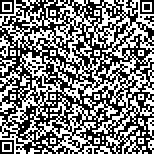| 摘要: |
| 沉积物-水界面(SWI)是生物地球化学循环的主要界面, 界面上溶解氧(DO)的分布实时测量对于了解生物扰动的复杂作用和生物地球化学循环过程有着重要意义。为了探索生物扰动作用对SWI 微尺度溶解氧二维分布的影响作用, 本文以八乙基卟啉铂为荧光指示剂, 掺杂香豆素(Macrolex Yellow 10GN)作为荧光素能量供体, 以聚苯乙烯为基质制作了光学平面传感膜。以发光二极管(LED)为激励光源, 结合彩色相机, 构建了基于比率法的二维溶解氧观测系统, 系统能够以0.36 mm 的空间分辨率对SWI 的溶解氧分布连续观测, 实验室内的模拟实验结果表明, 底栖沙蚕掘穴扰动可使局部沉积物溶解氧质量比提高3~4μg/g。该研究填补了国内基于比率法的平面光学溶解氧传感器研究领域的空白。 |
| 关键词: 沉积物-水界面 平面光学传感器 生物扰动 比率法 |
| DOI:10.11759/hykx20130502002 |
| 分类号: |
| 基金项目:国家自然科学基金项目(41176089); 国家“973”计划(2013CB429704) |
|
| Two-dimensional dissolved oxygen distribution at bioturbated sediment-water interface (SWI) |
|
|
| Abstract: |
| As the main interface of bio-geochemical circles, sediment-water interface (SWI) is one of the important research areas. The concentration and distribution of dissolved oxygen (DO) at SWI is of great significance to better understand the mechanism of bioturbation and biogeochemical circling. The sensor film utilizing Platinum(II)-octaethylporphyrin (PtOEP), Macrolex Yellow 10GN, and Polystyrene were userd as fluorescence indicator, donor, and matrix respectively. Planar optode was successfully developed with blue-LED as excitation light, color camera as image captor, and a self-made sensor film, showing good performance in the study. With the planar optode described above, an elevation of 3×10-6~4×10-6 of dissolved oxygen concentration was observed at bioturbation areas, with a spatial resolution of 0.36 mm. Abnormal points are analyzed at last. |
| Key words: sediment-water interface (SWI) planar optode bioturbation mechanism ratiometric method |
